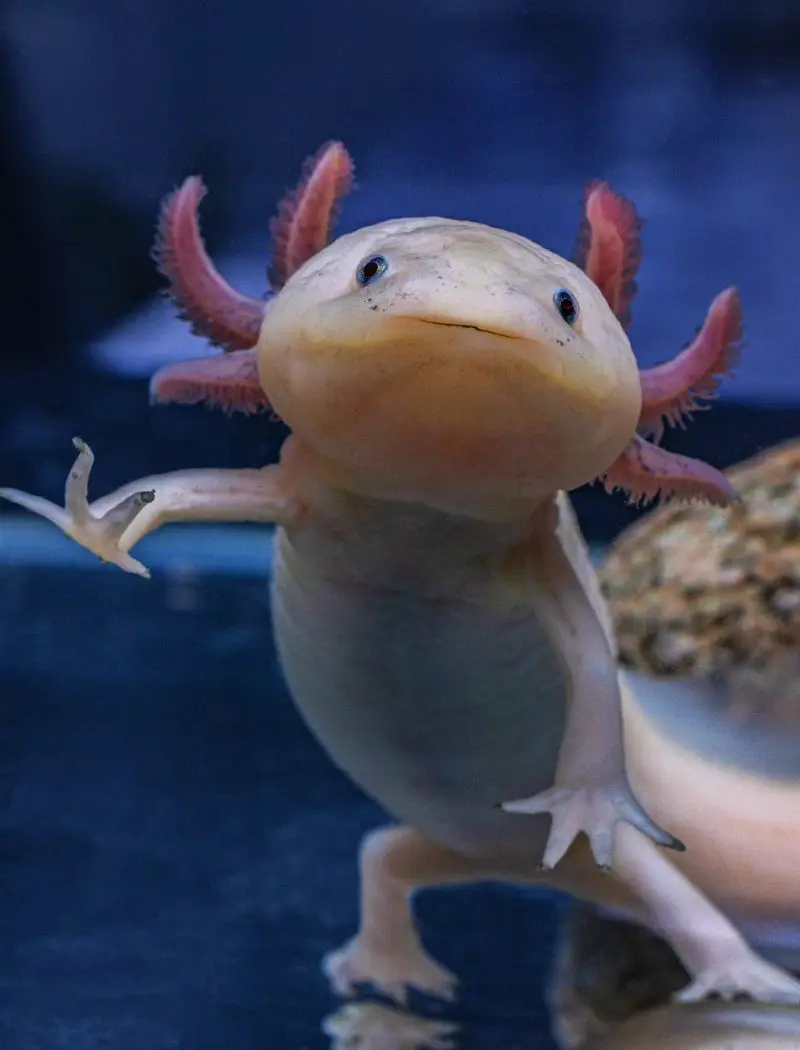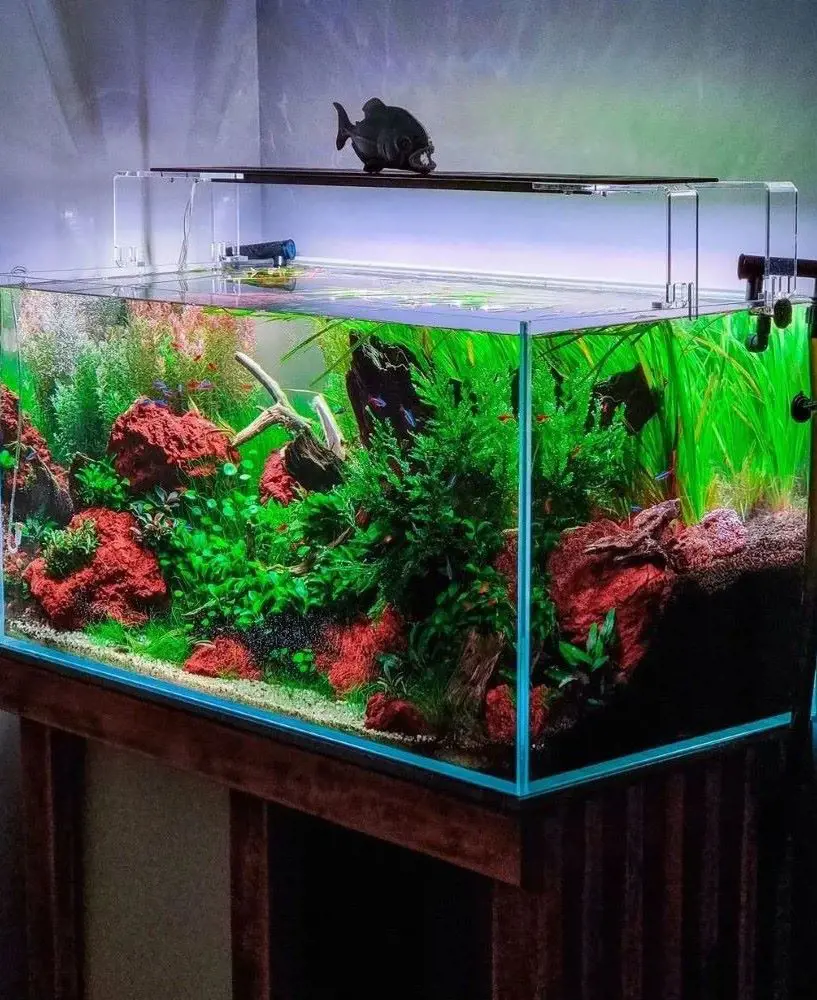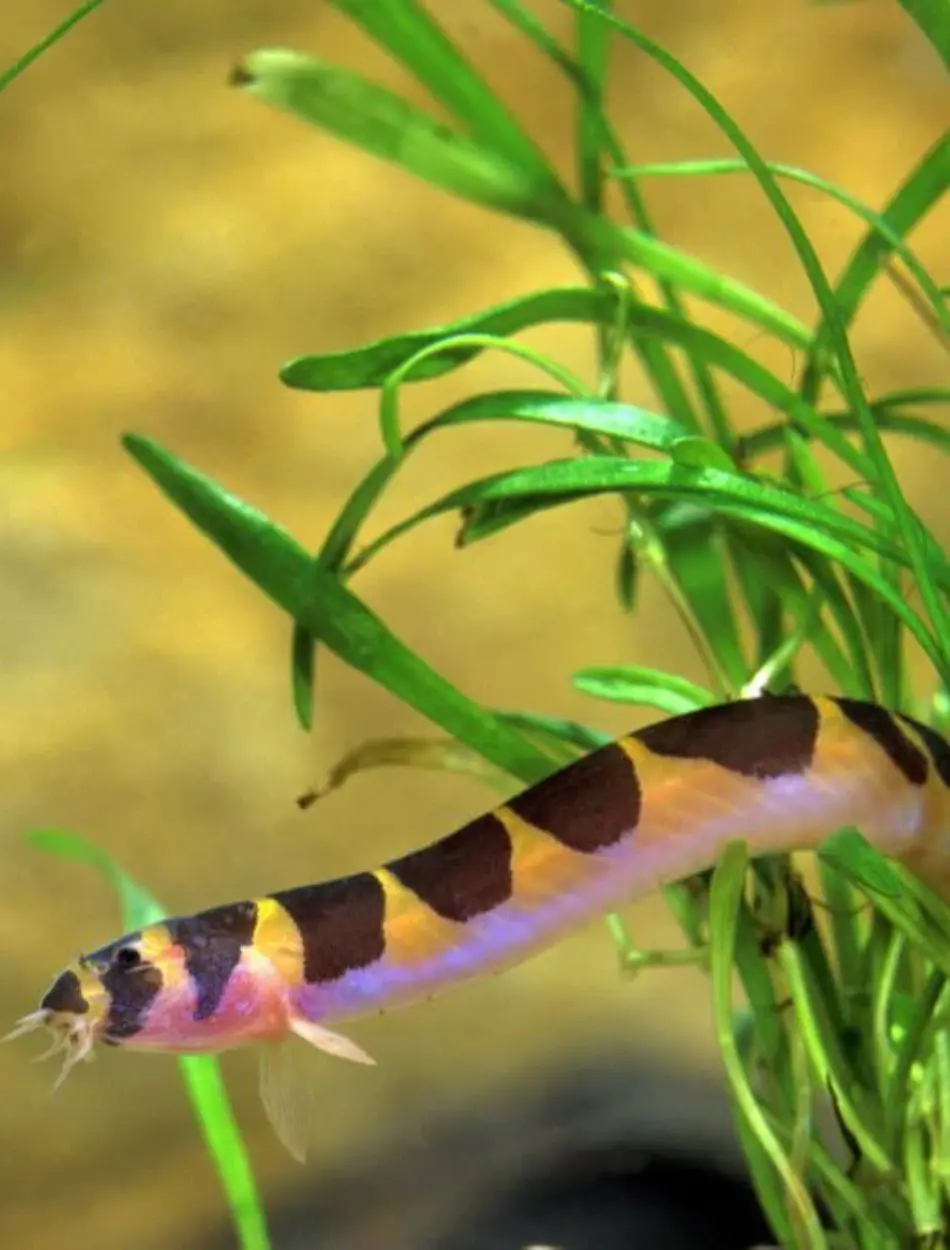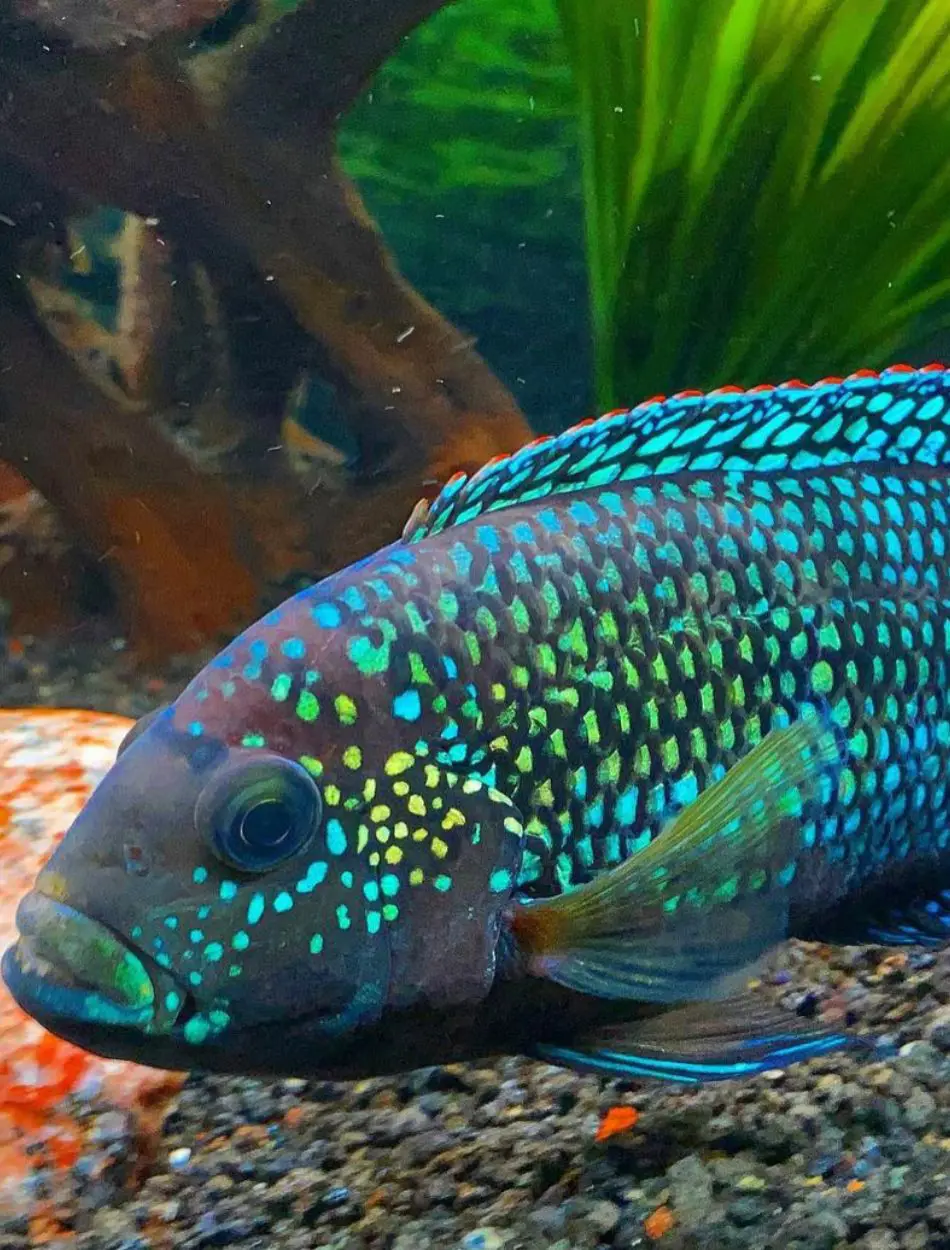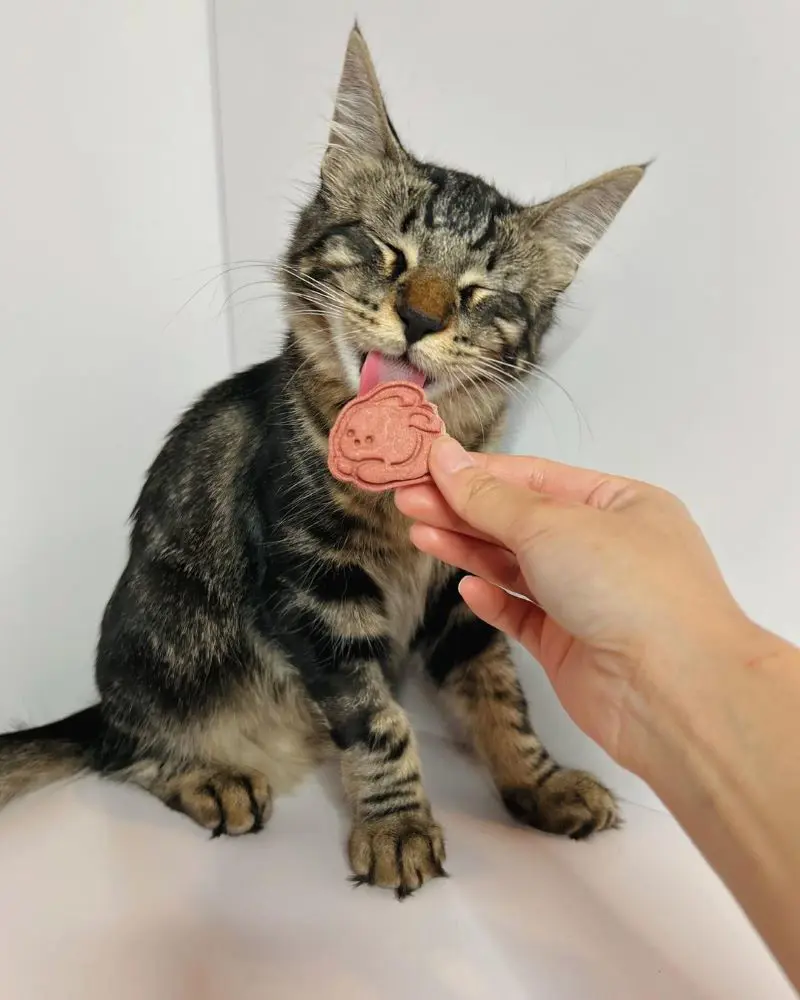Discus Fish Care Guide, Feeding Schedule And Tank Mates

Discus is a stunning freshwater species native to the Amazon River Basin in South America. Known for their vibrant colors and unique, disc-shaped bodies, these fish have become a favorite among aquarium enthusiasts worldwide.
If you are willing to keep them as part of your aquatic family, just go on reading about the aspects of their care, feeding schedule, and information on tank mates.
About Discus Fish
They have a body in the shape of a disk and that’s the reason for its name. Discus is a strong and resilient type of fish that can grow up to 25 cm and the average life span of this fish is 10 years. However, they are really complicated to keep and it require ideal living conditions. These beautiful fish are found in the Amazon River basin and belong to the category of cichlids.
These look captivating due to their size and shape and are sociable in nature. They prefer the temperature of water to be that of a warmer side and the texture to be soft. The characteristics will replicate the conditions in which they live in the wild. Though difficult to maintain, these beauty conscious and mild natured fish are favorites amongst the expert aquarists.
Discus Fish Behavior And Personalities
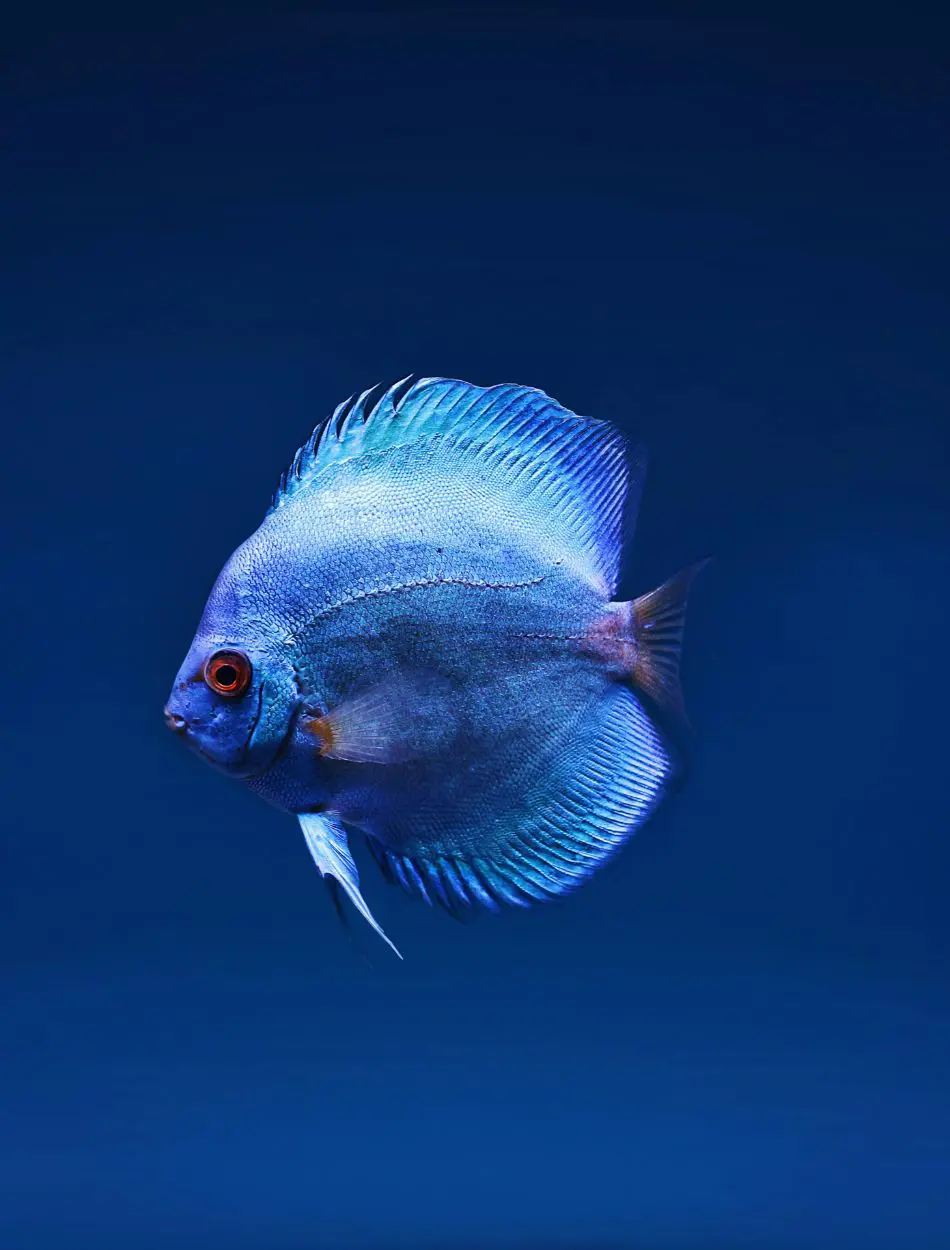
Social Structure and Hierarchy
The species of discus fish present in a tank form a social hierarchy among them. The behavior involved is too elusive yet leads to some pretty subtle but interesting interactions. These dynamics through which they interact will provide clear actual behavior and tendencies, which will help in keeping the fish in mind a proper condition.
Communication Methodologies
The known activity of discus fish is body language and change of color very slightly. This can be utilized to know when the fish is stressed, sick, or even ready to reproduce. A stressed one will hide away, not eat, and start going black from head to tail. They will in extreme cases appear greyish due to increased slime production. They will clamp their fins and cower away together in a dark corner of the tank.
Schooling vs. Shoaling
While these fish are generally seen in groups, it's essential to emphasize that in the case of the process of schooling (in the context of moving as a group) and the semantics of shoaling, which means loosely grouped, this must clarify that Discus are shoalers. In the event that an adequate amount of space and hiding spots are provided, they will have minimal stress and hence improved health.
Setting Up The Perfect Discus Tank
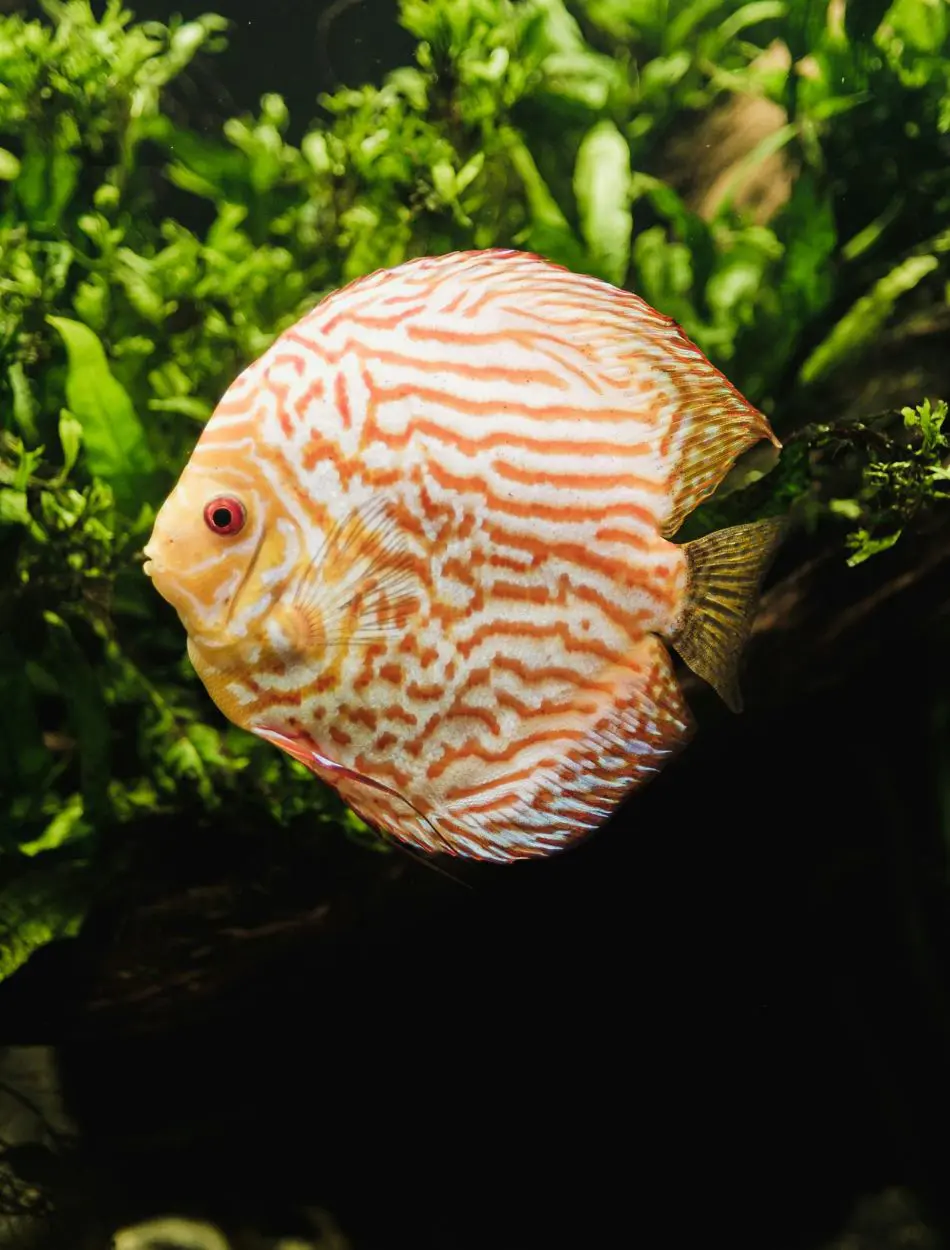
Tank Size And Shape
Since they are quite large by nature and socially in temperament, discus fish need an expansive area. At least a volume of a 55 gallon tank may be required for a small school of 5 to 6 discus. They love tall tanks because their body shape is not horizontal but rather vertical in orientation.
Water Parameters: Providing the Ideal Conditions
One has to provide them with stable water parameters within the recommended range in order to keep discus fish healthy and full of life. The temperature needs to be between 82 to 86°F; this mimics the conditions they normally dwell in the tropical environment. The pH value must stay slightly acidic, always remaining between 6.0 and 7.0, while water hardness is supposed to be soft at 1 to 4 dGH.
Besides, there are the parameters of ammonia and nitrite that should be kept at exactly 0 ppm because traces of these poisons can already be dangerous to discus fish. Consistent observation and necessary adjustment to the recommended parameter ranges are very imperative. General water maintenance plays a big role, and water changes amounting from 25% to 50% should be performed weekly to take care of good water quality.
They prefer slow moving water, so you need efficient filtration to handle the bioload but not much water flow. Canister filters are ideal because they offer efficient filtration without disturbing the surface of the water much. Adding a gentle airstone may help with low oxygen levels, but make sure it doesn't create too much turbulence.
Aquascaping: Plants And Decor
Take care of discus fish in a well planted aquarium with plenty of hiding spots. Use small and soft substrates such as fine sand or smooth gravel. Delicate underbellies require protection from hard substrates.
Some more fit varieties of hard plants, such as Amazon Swords, Anubias, and Java Fern, can manage the high temperatures required by discus. There is another cover available; driftwood and huge rocks can never go wrong but truly hiding is very necessary for mimicking their natural habitat.
Food And Diet
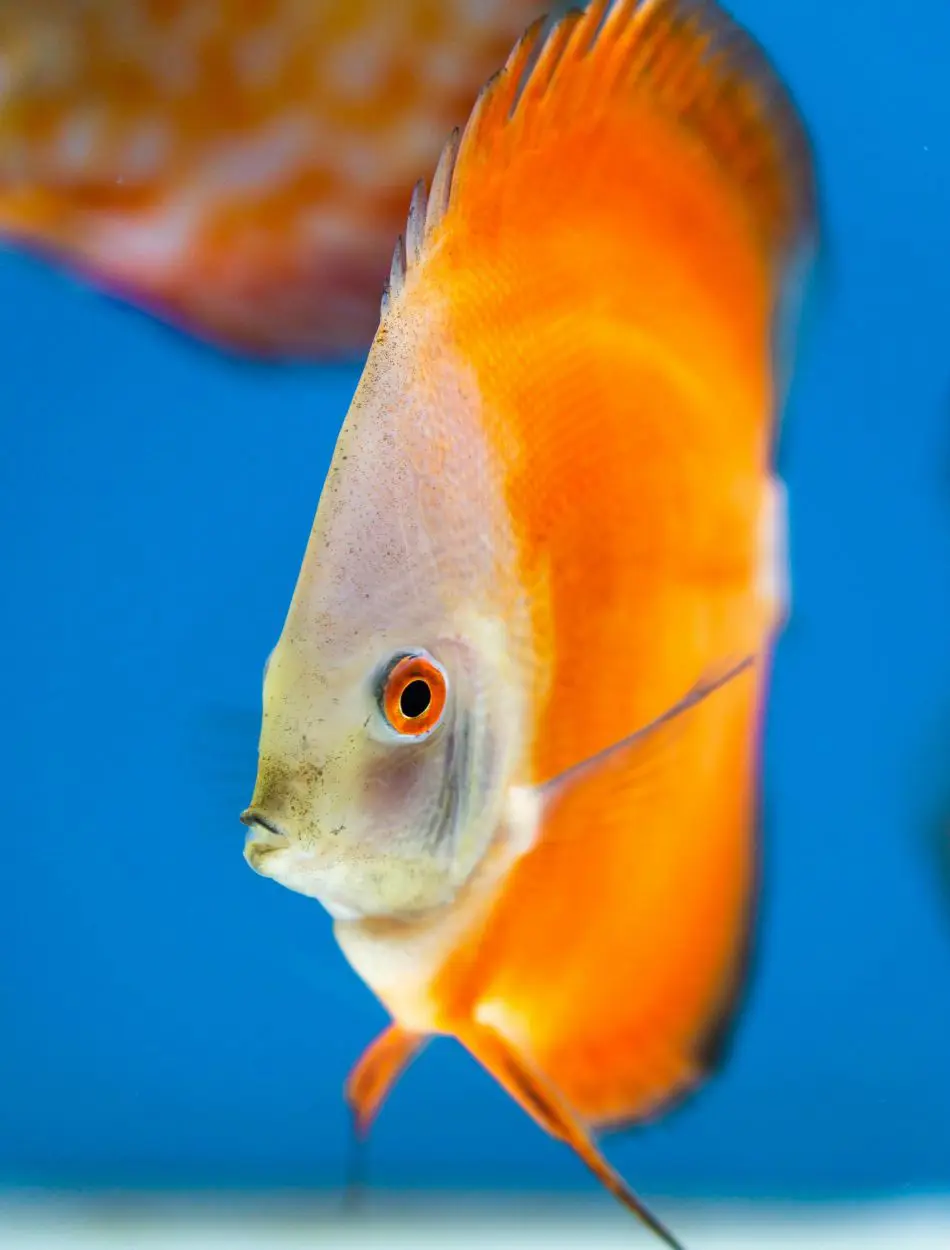
Understanding Their Diet
Being naturally omnivorous, discus fish consume small invertebrates, plant diet, and detritus in their wild habitat. In an aquarium, provide a diverse set of foods to ensure the supply of all essential nutrients.
Recommended Foods
For a well rounded diet, discus fish thrive on a variety of foods. High quality pellets specifically formulated for discus are essential, as they provide the optimal balance of protein and vitamins necessary for their health. Supplementing their diet with frozen foods like bloodworms, brine shrimp, and Beefheart mixes can closely mimic their natural feeding habits and should be included fairly frequently.
While not always necessary, live foods such as daphnia and mosquito larvae offer valuable stimulation and allow discus to practice their natural hunting behaviors. Additionally, incorporating vegetable matter into their diet is important; blanched spinach, peas, and spirulina based foods ensure they receive essential plant based nutrients.
Feeding Schedule
Feeding discus fish should be done a minimum of 2 to 3 times a day. Young discus fish need to be fed more times than two to help in their growth requirement, while mature or adult ones are okay when fed twice daily.
The most important thing to remember is never to overfeed, as excess food tends to pollute the water quickly. Remove leftover feeds within 5 to 10 minutes so there will be less risk of water pollution.
All About Tankmates
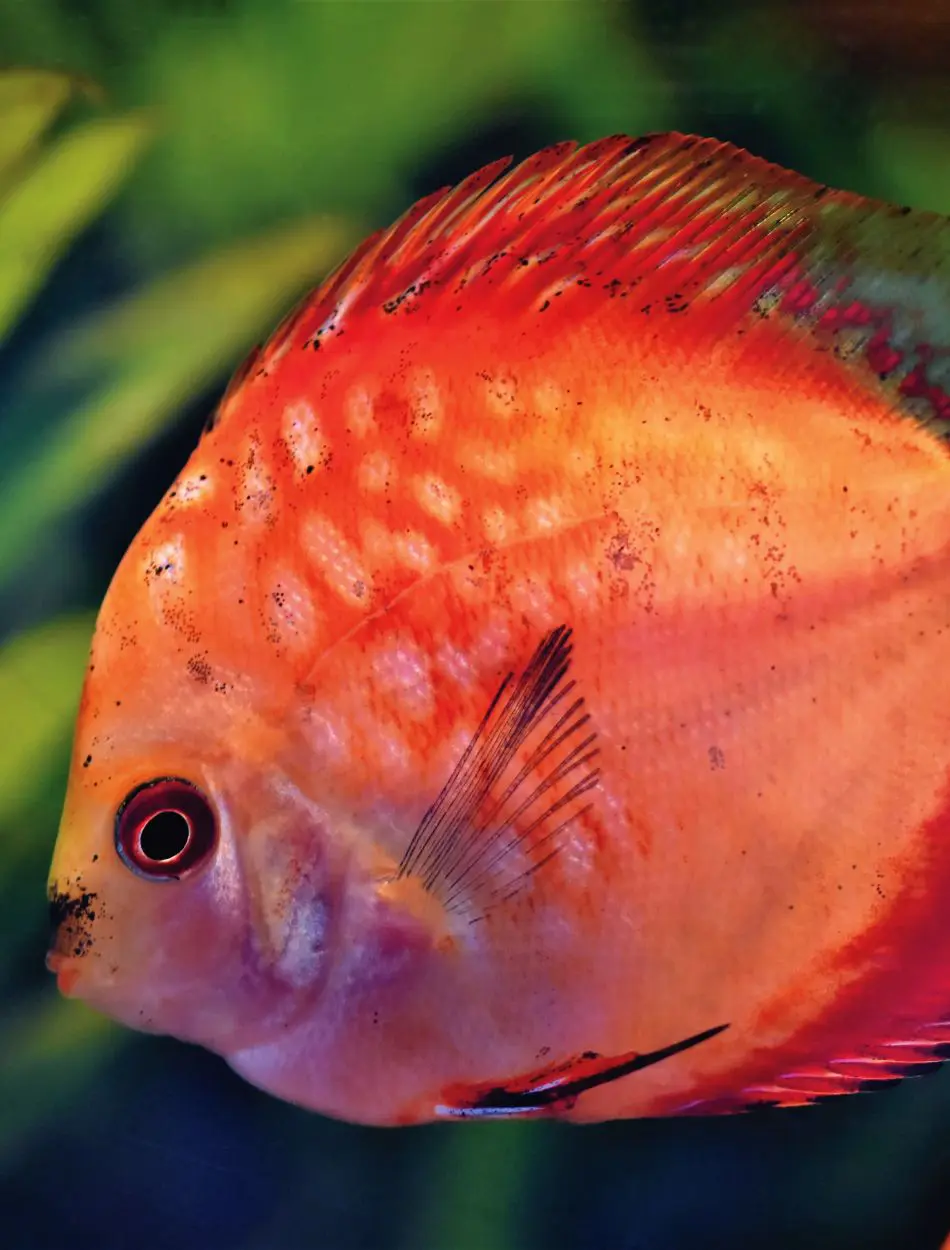
Understanding Social Behavior
Most of the time, discus fish are peaceful, and with the right companions, especially in a community tank set up, they thrive satisfactorily. They are also somewhat shy and can be easily stressed with more boisterous tank mates.
Ideal Tank Mates
When selecting tankmates for the Discus, find species that will be compatible with them and have similar water requirements. Cardinal Tetras, Rummy Nose Tetras, and Neon Tetras make excellent choices because they also prefer the same water conditions and are small in nature to compete with the discus over food. It's also good to add some bottom dwellers like Corydoras Catfish to clean up leftovers without disturbing them.
You can also add other small cichlids, such as Apistogramma and Ram Cichlids, as tankmates with your discus provided the space in the tank is enough. As for cleaning purposes, small Plecos such as the Bristlenose Pleco help a lot in cleaning without causing disturbance to the discus.
Tankmates Not To Go For
While choosing tankmates for this fish, one should avoid those species that might stress them or outcompete them. Angelfish are known to be territorial and will bully or even attack discus despite having identical habitat conditions.
Equally, Barbs or the Tiger Barbs are notorious fin nippers that form constant harassment, which is quite stressful for other fishes. Avoid having big, very aggressive cichlids, as they might overwhelm your fish tank and create very stressful conditions or even physical harm to your discus fish. Use peaceful species that go well with fish to ensure a harmonious, healthy aquarium.
Common Health Issues And Their Prevention
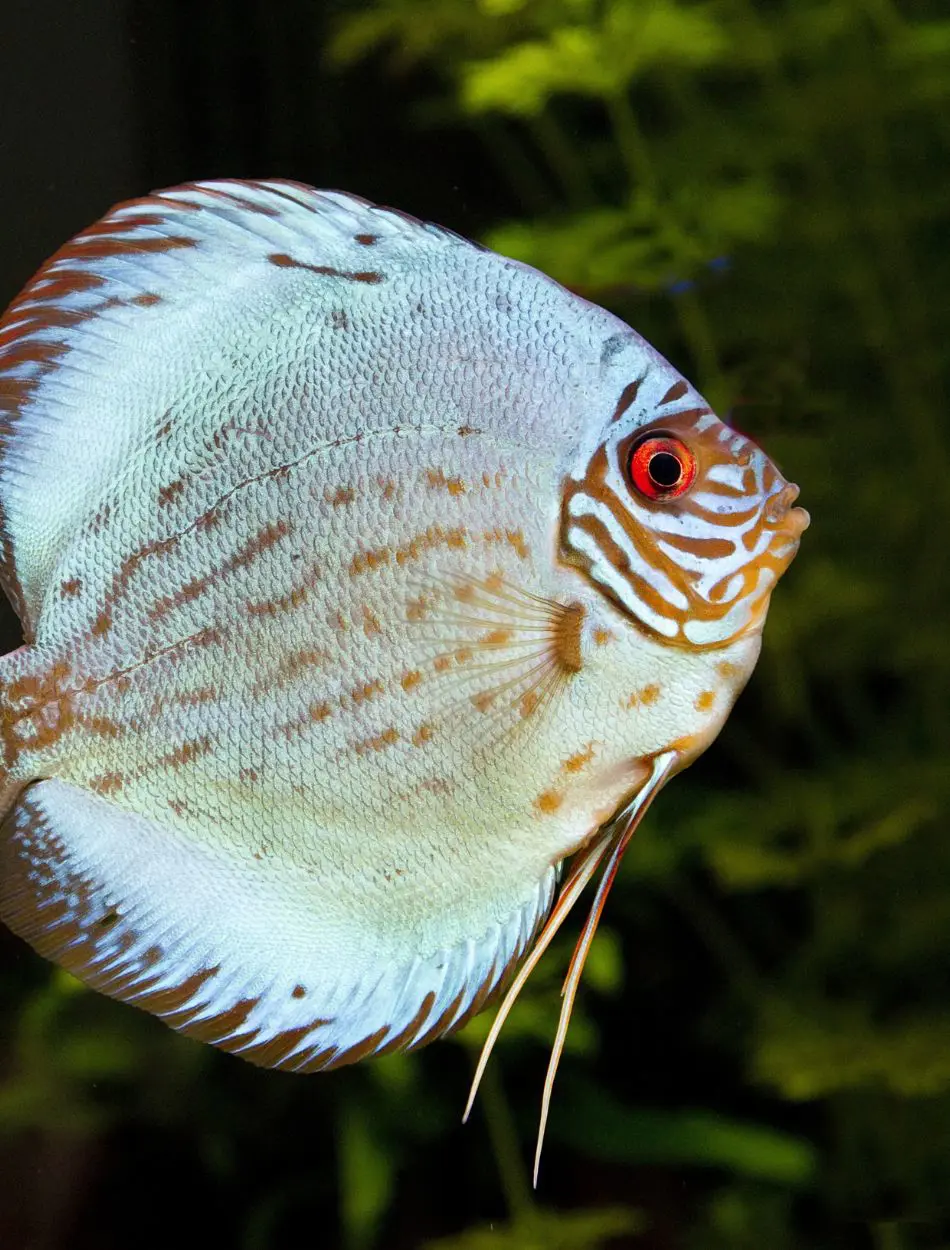
Recognizing Signs of Stress
The discus fish are very sensitive to poor water quality, rapid changes in the environment, and unsuitable companions. The signs that the fish is in distress or sick include the clamping of the fins whereby the fish holds its fins close to the body, which suggests that it is under discomfort or stress.
The other sign is the darkening of color, which acts like an indicator that the fish is under stress or ill. Moreover, longterm refusal to eat should be a symptom of concern since Discus are those fish that have a very good appetite. Consistently refusing food is, therefore, a sure sign that something may be wrong with a discus fish's health, and intervention should follow promptly.
Common Diseases
Many health issues in discus fish may arise from poor water conditions or poor care. Hole in the head disease often comes as the result of poor quality of water and poor nutrition. This could be avoided by regular water changes, coupled with a well balanced diet for fish. Parasitic Infections that can be both external, like flukes, and internal, such as worms, are very disastrous to the discus.
Quarantining new fish before adding them to the main aquarium and feeding medicated foods when necessary can minimize the occurrence of, or prevent many of these infections. Bacterial Infections may appear as cloudy eyes, open sores, or fin rot. Good quality water and treatment with antibiotics as directed will help to resolve these infections.
Preventive Measures
Another precautionary measure is quarantining new fish. Isolation for at least two weeks should be considered necessary before the fish are added to the main tank. This is important in preventing the spread of diseases from one fish to another. The regular maintenance of the tank is equally important to a healthy environment.
Regular maintenance includes regular water changes and other activities like cleaning filters, and vacuuming of substrate in order to remove wastes that help in retaining good quality water. Dietary supplements or vitamins can be added to the discus fish's diet for extra boosts to their immunity and general health. Following such practices shall establish a much more stable environment for your discus fish, which is free from diseases and thus favors the overall well-being and lifespan of your pets.
Breeding Discus Fish
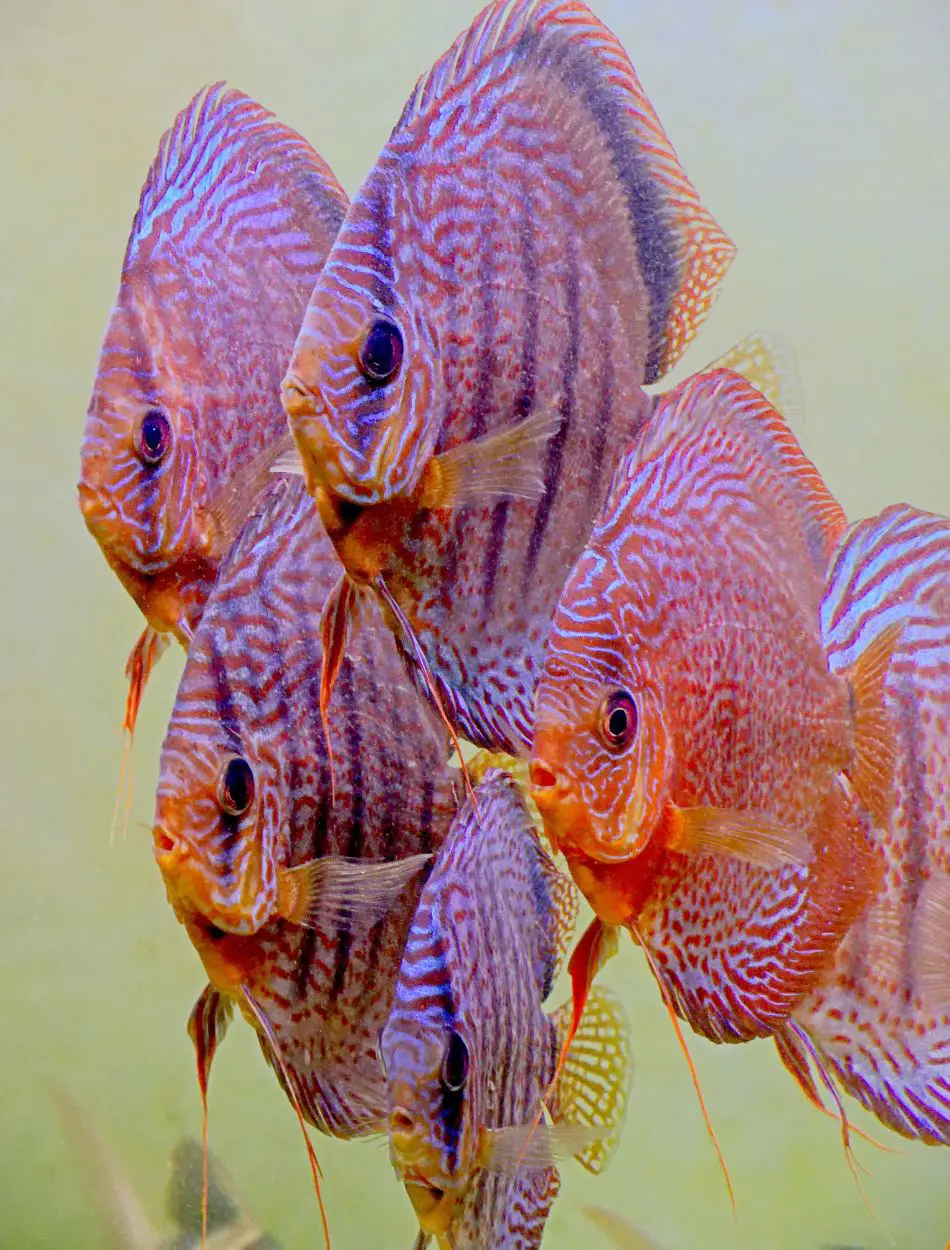
Set The Stage
Breeding discus might be tougher, as said already, but certainly, it is not impossible. The breeding tank should be a bit undersized, say about 20 to 30 gallons, and it should have relatively higher temperatures around 84 to 88°F with softer water, say pH 5.5 to 6.5 for the process to go smoothly.
Courtship And Spawning
Pair members of the breed are monogamous, strong binders. Obviously, they perform beautiful courtship behaviors, such as cleaning a spawning site together. Once the female places eggs, both males and females will guard and fan the eggs for hatching.
Feeding on their parent's mucus lasts for a couple of days after hatching. Subsequently, finely crushed flake food or baby brine shrimp can be introduced as they grow. To avoid aggression with emerging age, the fry should be separated from the parents after a couple of weeks.
Advanced Aquascaping for Discus Tanks
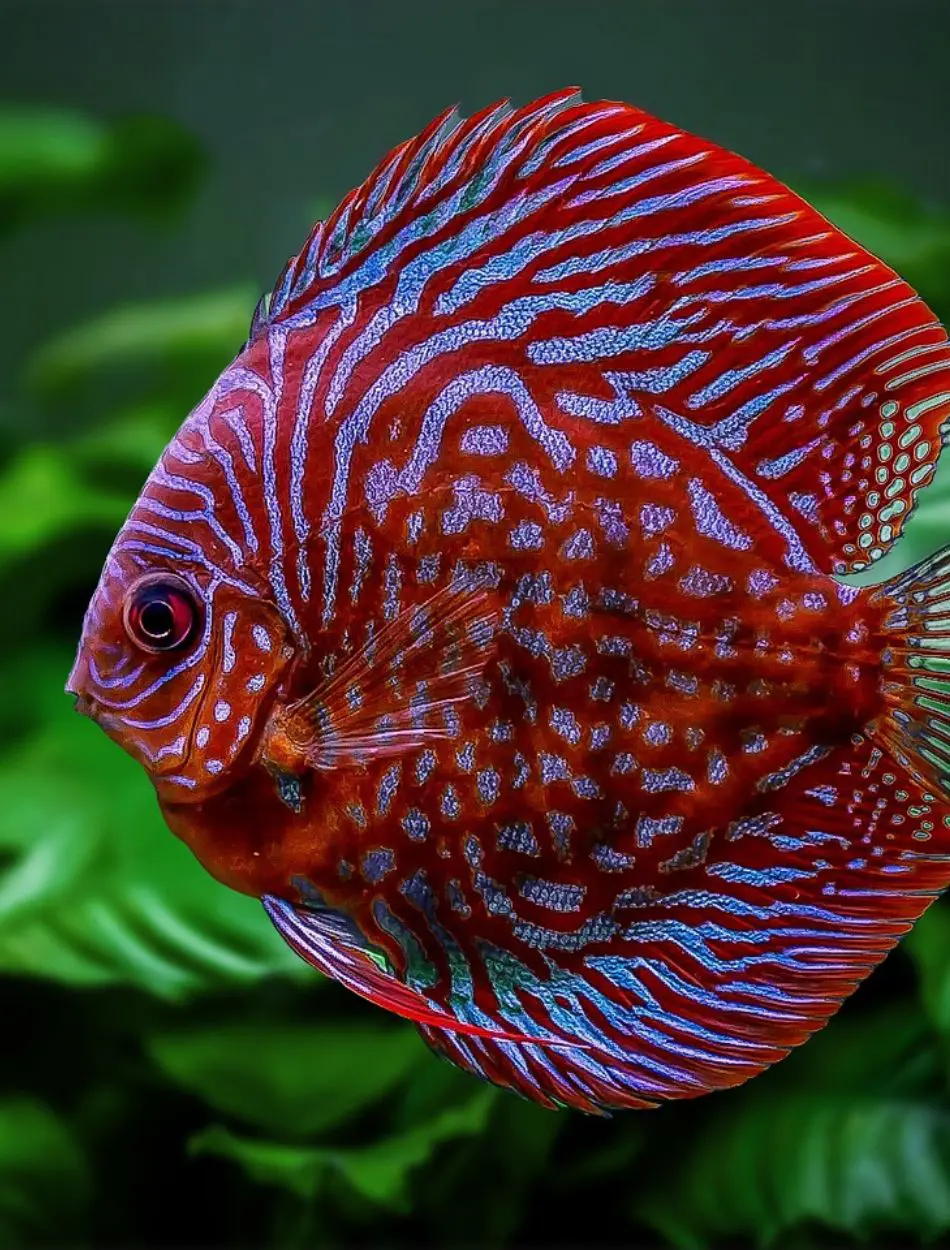
Creating A Biotope
You can start setting up an aquarium for discus fish by strategically placing driftwood and rocks creating territory boundaries, reducing aggression, and making it more pleasing to the eye. Having driftwood and rocks set up around different parts of the tank allows the fish to have a place to hide and mark their territory, reducing conflict and increasing feelings of security.
This will, from an aesthetic point of view, bring some natural beauty and texture into the aquarium. Moreover, driftwood and some rocks can take part in water chemistry by softening the water. Driftwood leaches tannins, lowering pH and slightly acidifying it, which is good for your fish. Other rock types that abound in calcium carbonate are known to buffer water hardness while influencing pH. Proper choice and addition of such components will bring forth a balanced, attractive, healthy aquatic environment.
Lighting
They prefer subdued lighting, which would help replicate their habitat and cause less stress. Several factors should, however, be considered in balancing adequate light for plants and comfortable lighting for the discus.
First, use lighting of average intensity. Very bright light stresses the discus unnecessarily; therefore, go for LED lighting that is equipped with controls to adjust the brightness. Use a light with about 6,500 Kelvin color temperature since it is good for plant growth but not too harsh for the fish.
Do maintain a balance and set up a schedule of lighting that imitates day and night. Generally speaking, 8 to 10 hours of light daily should be enough. It allows plants to photosynthesize and do well but has periods in darkness to help reduce the stress of the discus.
Recent posts
Fish
Axolotl (Mexican Walking Fish): Species Profile
Axolotl is a walking fish that is known to captivate fish enthusiasts and scientists. They remain aquatic their whole life and stay in the larval stage. They are also known for their regrowing ability and solitary nature. This article discusses the h...
20 Coolest Freshwater Fish To Add Pop And Color To Your Aquarium
With so many options of freshwater fish available, selecting the right species can be a daunting task. Due to careful breeding, there are thousands of species ready at your disposal to turn your room into a fish lover's paradise. From the vibrant col...
20 Best Betta Fish Tank Mates
Selecting suitable Betta fish tank mates is a delicate work that calls for a considerate balance between companionship and compatibility. Although renowned for their colorful colors and flowing fins, Betta fish are equally notorious for their territo...
Why Is My Fish Tank Cloudy?
Cloudy fish tanks can be frustrating for any aquarium owner. Especially if one has put in the necessary effort to accomplish a beautiful underwater setting. Whether you are an inexperienced aquarium holder or one of the pros, cloudy water may be the ...
20 Long Freshwater Fish For Aquarium
Having a range of long, gorgeous fish in your freshwater aquarium can make it an immensely fulfilling experience. Choosing the right fish is the first step to an exciting freshwater aquarium, and long freshwater fish are among the best options. ...
17 Cichlid Tank Mates For Your Aquarium
Cichlids are one of the diverse and captivating freshwater fish that are known for their vibrant colors. They are found in tropical America, mainland Africa, Madagascar, and southern Asia. These freshwater fish have elongated streamlined bodies...
